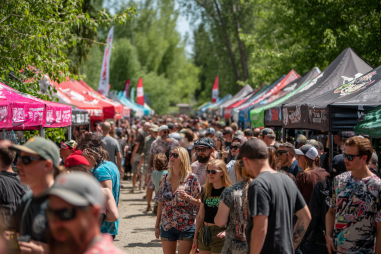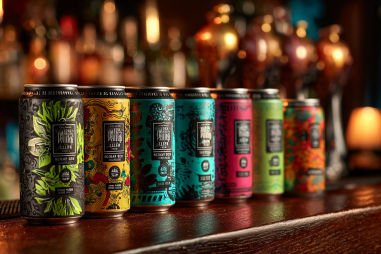Brewing your own beer at home is a rewarding adventure, and venturing into the world of Sour IPAs adds an exciting twist. These beers offer an intriguing blend of tartness and hop bitterness, crafting flavors that are complex, refreshing, and utterly satisfying. If you’ve been curious about how to create your very own Sour IPA, you’ve come to the right place. This guide covers everything you need—from gear and ingredients to key brewing techniques—so you can craft a vibrant, hoppy, and tart beer right in your kitchen.
Getting to Know Sour IPAs: What Makes Them Special?
Sour IPAs combine the intense hoppiness of India Pale Ales with the sharp tang of sour beers. This hybrid style marries the fruity and resinous hop aromas with a lively tartness, often derived from lactobacillus or wild yeast strains. The result is a beer with both a refreshing acidity and a bold hop profile that delights the palate in every sip. Understanding this balance is crucial since the sourness and bitterness have to complement, not overpower, each other.
Essential Equipment and Ingredients for Brewing Sour IPAs at Home
Starting your Sour IPA brewing journey requires the right tools and quality ingredients. Here’s what you’ll need:
- Brewing Equipment: A fermentation vessel (preferably glass or food-grade plastic), a brew kettle, airlock, siphon, hydrometer, thermometer, sanitizer, and bottles or kegs for storage.
- Ingredients: Base malts such as pilsner or 2-row malt, specialty malts sparingly, hops with bold fruity or piney notes (Citra, Amarillo, Mosaic), yeast strains suitable for IPAs (American ale yeast), and souring agents like lactobacillus cultures or wild yeast.
- Additives: Depending on your recipe, you might want additional flavor contributors like fruit, adjunct sugars, or oak chips.
Since souring introduces specific microbes, it’s important to have a dedicated fermenter or to meticulously clean your equipment to avoid cross-contaminating future brews.
The Step-by-Step Brewing Process
While the ingredients and methods can vary, the following steps outline a common approach to brewing a Sour IPA:
- Mash: Start by heating your grains to convert starches into fermentable sugars. A typical temperature range is 148-154°F (64-68°C) to balance fermentability and body.
- Boil: After sparging, boil the wort to sterilize it and add hops. For a Sour IPA, consider adding bittering hops at the start of the boil and reserving aroma hops for late additions or dry hopping to preserve their delicate flavors.
- Cool: Rapidly cool your wort to pitching temperature (usually around 68°F or 20°C for ales) to minimize contamination risk.
- Souring Phase: This can be done in two main ways:
- Pre-fermentation souring: Introduce lactobacillus to the cooled wort before boiling. This helps develop acidity without hopping interference.
- Post-fermentation souring: Use mixed cultures including Brettanomyces after primary fermentation for complex sourness.
- Fermentation: Pitch the chosen yeast and allow primary fermentation to proceed, typically lasting one to two weeks.
- Dry Hopping: Add hops during or after fermentation to enhance aroma without excessive bitterness.
Managing Souring Agents and Fermentation
Souring can make or break your brew, so managing the microbes is key. Here are some pointers:
- Lactobacillus: A friendly bacteria that produces lactic acid for tartness. It thrives in a low oxygen environment and prefers temperatures around 95°F (35°C) when used alone (kettle souring).
- Wild Yeasts (Brettanomyces): Give complexity and subtle funkiness when used post-primary fermentation.
- Timing: Kettle souring (before boil) offers control and quicker results but less complexity. Mixed fermentations post-boil require more patience and yield richer profiles.
- Sanitation: Maintain rigorous cleanliness to prevent unwanted bacterial infections that could spoil your beer.
Hopping Strategies for the Perfect Balance
Hops are essential in achieving the bright bitterness and aroma characteristic of a great Sour IPA. To fine-tune the balance between sourness and hop flavor, follow these tactics:
- Bittering Hops: Add early during the boil to extract bitterness that stands up to the acidity.
- Flavor and Aroma Hops: Add late in the boil or during dry hopping to retain volatile aromatic compounds.
- Hop Varieties: Choose hops with fruity, citrusy, and piney profiles that complement the tartness.
- Dry Hopping: Post-fermentation hopping creates a fragrant, fresh hop character that balances the sour backbone beautifully.
Tasting and Adjusting Your Brew
As your Sour IPA develops, tasting is fundamental to ensure you achieve the desired flavor profile. Here are some tips for evaluating and refining your homebrew:
- Assess acidity: Aim for a pleasant tartness without overly sharp or sour notes that could overpower.
- Check bitterness and hop aroma: They should complement sourness without clashing.
- Adjustments: If the sourness is too muted, consider longer souring or adding fresh souring agents. If bitterness is weak, increase hop additions carefully in your next batch.
Jot down your observations so you can replicate successes or learn from stumbles.
Troubleshooting the Most Common Challenges
Homebrewing Sour IPAs can come with a few hiccups. Being prepared will help you troubleshoot effectively:
- Excessive sourness: This can happen if lactobacillus works too long or at high temperatures. To prevent, control souring time and temperature vigilantly.
- Off-flavors: These might arise from contamination or improper fermentation temperatures. Maintain cleanliness and monitor fermentation closely.
- Flat beer: Could be from infection or under-attentive fermentation. Ensure proper yeast pitching rates and fermentation conditions.
- Unbalanced bitterness: Bitter or astringent flavors may indicate too many early hop additions or high mash temperatures that extract tannins.
Best Practices for Storing and Serving Your Homebrew
Once your Sour IPA is complete, how you store and serve it impacts the final enjoyment:
- Storage: Keep your bottles or kegs in a cool, dark place to preserve freshness and flavor. Sour IPAs often improve with short-term aging but are best consumed within a few months for hop vibrancy.
- Serving: Use clean glassware, ideally tulip or IPA glasses, at around 45-50°F (7-10°C) to showcase the aroma and flavor profile appropriately.
- Carbonation: Proper carbonation lifts the flavor and adds refreshing mouthfeel, so ensure your beer is well-carbonated but not overly fizzy.
Embrace the Joy of Crafting a Truly Unique Beer
Brewing a Sour IPA at home is a fascinating blend of science, art, and patience. With the right combination of ingredients, equipment, and techniques, you can create a wonderfully balanced beer bursting with both tartness and hop character. Experimentation is part of the fun, so don’t be afraid to tweak your recipes or try new approaches as you develop your brewing skills. When you finally pour your own crafted Sour IPA, nothing tastes quite as good as a beer born from your own passion and effort. Cheers to your brewing adventure!







